Recent Posts
-
Yes, There IS a Future!
December 26, 2025
-
Real Crimes and the Coming Violence
September 6, 2025
-
Whither Modern Life?
June 27, 2025
-
What the Hell
June 18, 2025
-
As Darkness Engulfs Us
April 6, 2025
-
AI, Risk, and Work
January 17, 2025
-
“Things Are in the Saddle, and Ride Mankind”
December 29, 2024
-
Forgotten Futures in Seattle
December 12, 2024
-
Autocracy Defeats Neoliberalism
November 14, 2024
-
History… We’re Soaking in It!
October 2, 2024
|
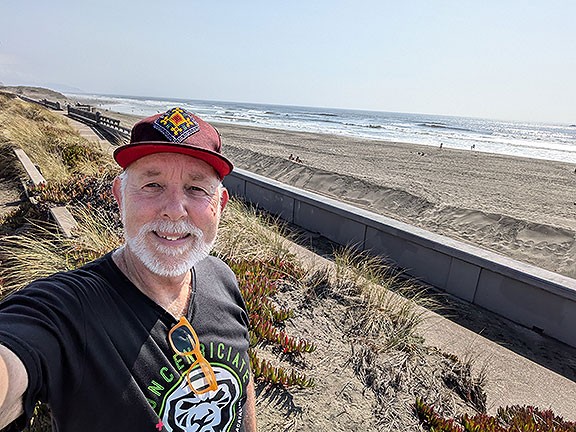 Visiting the Pacific Ocean in late August, an easy bike ride from home… Last December I wrote a bit about my discovering more deep history around the Pacific. I neglected to mention then my pal Tina’s remarkable atlas Sea Change: An Atlas of Islands in a Rising Ocean. In it she makes her way from island to island around the planet, giving capsule histories and likely scenarios as the oceans continue their inexorable rise. California’s history is fully intertwined with that of the Philippines, Hawaii, Japan, Korea, China, India and the rest of what is lumped together as Asia and the Pacific. Tina’s atlas doesn’t try to untangle all those complicated histories, though she notes many important pieces in passing. In the past few weeks I’ve had the pleasure of diving rather deeply into this.
An incredible book, well over 500 pages, is Alfred McCoy’s 2009 opus Policing America’s Empire: The United States, the Philippines, and the Rise of the Surveillance State. He has popped up in prior blog posts of mine as the author of various works describing the steady unraveling of the US empire (he originally made his name with The Politics of Heroin in Southeast Asia that revealed the role of the CIA in running heroin during the Vietnam war). This book on the Philippines and US colonialism is a tour de force, and a product of 40 years of close research McCoy carried out during most of his academic life. It covers the initial seizure of the Philippines in 1898 and betrayal of the ongoing war of liberation there, through the many years of developing and perfecting technologized systems of counterinsurgency and colonial repression, up to the post-WWII granting of formal independence, the Marcos martial law regime, the post-martial law “democratic” governments up to Gloria Arroyo’s in the early 2000s, and more. It’s so detailed and is so careful to connect the role of various colonial administrators (starting with future president William Howard Taft, governor of the Philippines in 1901) to their later roles in US domestic politics, that it is incredibly revealing. Perhaps as telling, if you followed any of the news of Philippine President Duterte, who was wildly Trumpian in his denunciations of drug users and criminals and brazen in unleashing the police and military in mass killing campaigns, reading this book you come to realize that he wasn’t such a huge departure from what preceded him in Philippine politics (nor what followed, i.e. “Bongo” Marcos, Jr.). It is a work of deep historiography too. Here McCoy helps illuminate a framework he employs that sets him apart from most historians:
Even this research is still, at this writing, overwhelmed by the sheer mass of dissertations, monographs, histories, textbooks, documentaries, monuments, and museums whose unstated, unwitting aim is to affirm state authority. Through the sum of these endeavors, historians have encircled the nation-state with a sacral barrier that precludes cognizance of its profane margins: systemic violence, institutional corruption, extralegal security operations, and most important, syndicated vice. Many social historians have escaped the nation-state’s hegemony through studies of popular movements among workers, women, or minorities. But few have looked at the state long and hard from its sordid underside—an interstice that is the sum of addiction, avarice, blackmail, cowardice, scandal, torture, venality, and violence. As acolytes of the nation-state, conventional historians turn away from such a disconcerting dimension and often adopt a positive, at times celebratory view of their polity that discourages consideration of the influence of the informal on the formal, the criminal on the powerful, or, in some cases, the colonized on the colonizer. (p. 12)
I will come back to McCoy in a bit. There’s much more to share from his work, and it connects in various ways to other themes I want to expand on. But first let’s bring in Amitav Ghosh’s latest nonfiction work Smoke & Ashes: Opium’s Hidden Histories. This is a work that carefully brings to the forefront the sordid underside McCoy describes above. It also helpfully grants the poppy plant itself historical agency!
The brute fact is that it was a flower that defeated the mightiest military power in human history [the U.S. in Afghanistan]: the opium poppy may be humble in appearance, but it is one of the most powerful Beings that humans have encountered in their time on earth. To be sure, tea, sugarcane, tobacco, rubber, cotton, Yersinia pestis, and many other plants and pathogens have played major roles in human history, some of them over several centuries. But today they are all much diminished in their influence, while the opium poppy is mightier than ever. (p. 112) … in colonizing the poppy fields of Bihar [India], the colonizers have themselves been colonized—by a non-human entity whose intelligence, patience and longevity far exceed that of humans. It is almost as if the elders of the plant kingdom, having concluded that Homo sapiens was too dangerous an animal to be allowed to survive, had given humankind a gift that they knew would be used by the most ruthless and powerful of the species to build economic systems that would slowly, inexorably, bring about the end of their civilization. (p. 250-251) … …opium creates its own temporalities: when opioid epidemics subside, they are followed by periods of amnesia, which, after a few decades, help to rehabilitate opioids all over again. These cycles are another sign of opium’s potency as a historical actor in its own right. (p. 270)
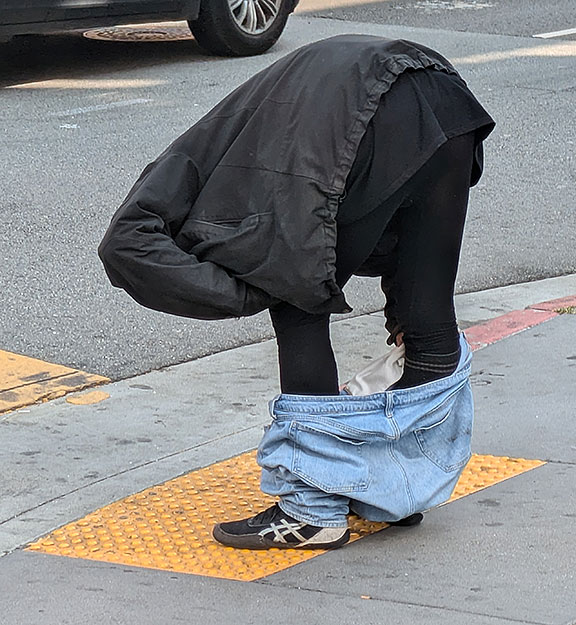 An all too common sight in San Francisco these days, someone in the midst of a “fentanyl freeze.” San Francisco is famously having a drug problem. It’s decades old, but it is also quite new in that the arrival of synthetic opium in the form of fentanyl has been killing drug users at an unprecedented rate. The anti-overdose drug Narcan is now readily available and many people are carrying it around to try to save the lives of people who are obviously dying on our streets. It can be rather bleak walking past the blocks where police seem to have ushered the most desperate drug users to congregate. It is not uncommon these days to see people in almost any part of town doing the “fentanyl freeze” where they are rooted, standing stock still but bent completely in half as their upper torso has descended towards their knees, unable to sustain an upright position while experiencing the intense high of a fresh dose. It’s very sad, to say the least. But our opioid addiction crisis covers the country, and by all accounts is as bad or worse in many of the most abandoned and poverty-stricken rural areas of the midwest and the south in addition to the inner cities.
Continue reading History… We’re Soaking in It!
I’ve been away from the blog again, this time absorbed in preparing some new content for a 2nd edition of Hidden San Francisco, forthcoming in 2025. But I should be able to crank out a few posts in the next week or two… we’ll see.
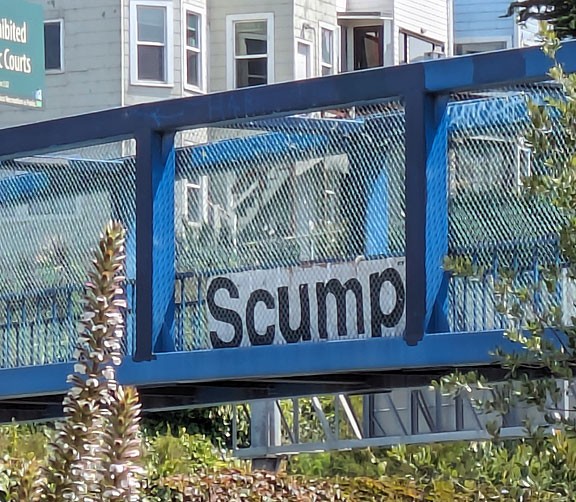 The view from my petanque court… I’m in that part of the population that can’t understand for a second how so many people continue to support Donald Trump. But unlike most of those who I share that sentiment with, I am sure Harris will be a conservative corporate Democrat who earns our wrath within minutes of taking office. For some of us, she earned it already… The local San Francisco BayView newspaper, one of a dozen independent journalistic efforts I’ve recently given small donations to, ran a good interview by Ann Garrison with Bradley Angel of Greenaction where they discussed the emptiness of Harris’s claim to have been a vigorous prosecutor of environmental crimes during her time as SF District Attorney or as California Attorney General. In fact she did very little, and like Obama and Clinton before her, she has the political skill to waffle rightward as needed to defend the profitable interests of her friends and allies while sounding a vaguely populist note that invokes a “caring” facade. It’s really pretty repulsive. But no surprise.
Back when San Francisco still had the Bay Guardian weekly newspaper, it used to rail against the [Willie] Brown-[Phil] Burton Machine that dominated local politics since the late 1960s. Over the years it has persisted and brought along quite a lot of prominent politicians, Kamala Harris being at the current head of the class. Of course Phil Burton died decades ago but Nancy Pelosi ably filled his legislative shoes and between her, Willie Brown, and Dianne Feinstein, they were all skilled at bringing home the bacon to San Francisco one way or another. All are so connected that they are able to make corporate donations rain as needed. Kamala Harris, Gavin Newsom, and a host of junior politicians coming up behind them are products of this carefully constructed “liberal” faction of corporate-sponsored and -controlled politicians. None will challenge any aspect of the power structure that prevails—not the military-industrial complex, not agribusiness, not the petrochemical/fossil fuel behemoths, and definitely not the new tech monopolists. That’s why the public clamor to fire Lina Kahn at the Federal Trade Commission is making for some riveting theater—how blatantly obedient will Kamala Harris be to her corporate overlords? I already know the answer, unfortunately.
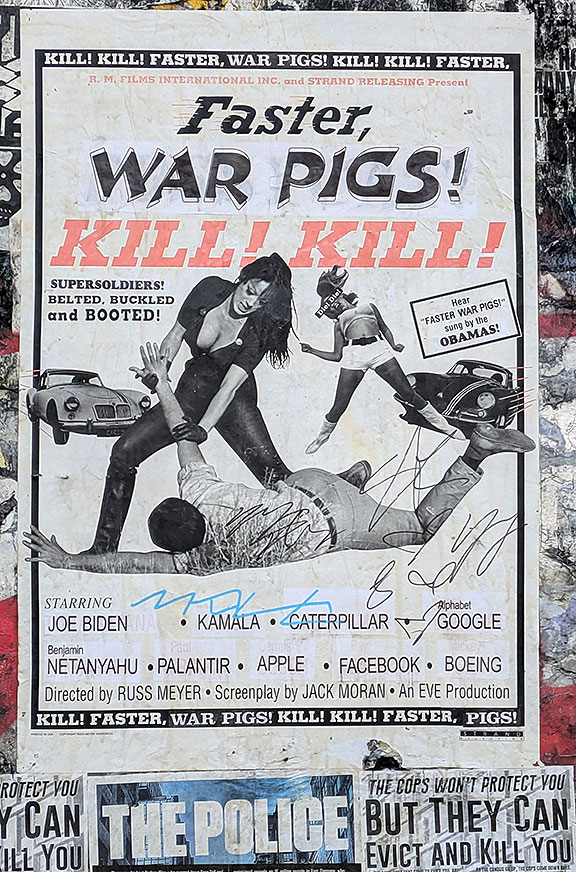 from our always interesting Democracy Wall… Anyway, as the title of this post has it, this is a truly numbing spectacle. Of course I’d prefer the corporate war-mongering Democrat with tepid climate policies and a likelihood of supporting women’s health care over the deranged Fascist wannabe dictator who wants to burn everything to the ground as fast as possible while taking his cut of everyone else’s business… what a choice! But if you are in the throes of the quadrennial madness that thinks it makes a really big difference which faction of the ruling class is running the show, well, I’m as puzzled by that as I am by the imperviousness of Trump’s support.
On the Latino USA podcast with the always wonderful Maria Hinajosa they had a roundtable about journalism and Latinos with some veteran reporters. They acknowledged that journalism has shrunk in the past decades—less resources to cover news, and narrower intellectual space in which to do it. No surprise. In fact, I’ve been thinking about this sort of by accident over the past month as I increasingly tune out the mainstream news of the New York Times, Washington Post, SF Chronicle, and especially CNN, MSNBC and the pure propaganda of Fox. The endless hysteria over breaking (non)news, the obsession with (meaningless) polls and the horse race, the weather catastrophes each treated as a one-off as though the climate catastrophe isn’t at the root of the endless floods, fires, droughts, and refugee crises… the biased coverage of wars, or the complete omission of any mention of them!… journalism, owned by a few major media corporations, is not even entertaining! And it’s a long way from what I would consider legitimate journalism.
Luckily there are a number of credible alternatives if you want to seek them out. Harry Shearer’s hilarious weekly Le Show does a great job of presenting a lot of news that disappears before you ever hear about it (especially regarding the nuclear industry, microplastics, the Olympics, and “news of the Godly” i.e. church scandals). I find myself glad to connect with Matt Stoller’s reporting on monopolies (on Substack); David Sirota’s news site The Lever and his new podcast called The Master Plan about the systematic corruption of the U.S. government going back to the 1960s and early 1970s; The Intercept; DropSite News; Ken Klippenstein on the National Security State; Gil Duran at The Nerd Reich; regular essays on TomDispatch; Ed Zitron’s often hilariously bitter podcast and newsletter Better Offline; 404 Media, a collective of several journalists who left various online sources; San Francisco’s go-to source of news has remarkably become none other than Mission Local who have been doing great coverage on the local elections among other things; and of course there are all the old standbys: local radio stations KALW-FM, KPFA-FM, KPOO-FM, shows like Democracy Now, and the less rushed journalism available from The Nation, The New Yorker, New York Review of Books, Mother Jones; neighborhood newspapers in San Francisco like the aforementioned BayView, and El Tecolote and Potrero View.
I’m sure I’ve left a few off my list that I’ll think about later… the point is that I’m having to do a lot of á la carte shopping to get my news. I have to sort through a dozen online sources and about that many podcasts, and another dozen or so print magazines that arrive regularly in my mailbox. How I wish there was a decent newspaper and a solid TV newscast I could get all these sources compiled and edited through! Has someone invented that yet?
I’ll be back in a few days with a more typical post, talking about a bunch of books!
I’m sitting in an old 1830s farmhouse near the border between New Hampshire and Massachusetts. It’s over 90° and quite humid, as it has been since I arrived five days ago. It seems the heat wave will only intensify in the next days. I spent a lot of time here in the 1980s and early 1990s before my daughter was born and then when she was a child we spent most summers here. I passed through once in the early 2000s, but haven’t spent time here for more than 25 years. It’s delightful to be with my granddaughters, who are now 7 and 4 and at the peak of enjoyment for a lazy summer in New England on a sprawling farm with a swimming pool, birds and bugs galore, and plenty of attentive adults to engage with as needed. I feel quite blessed to have this time with them, it passes SO quickly, and they are growing emotionally and intellectually by leaps and bounds. It’s great fun to watch it up close.
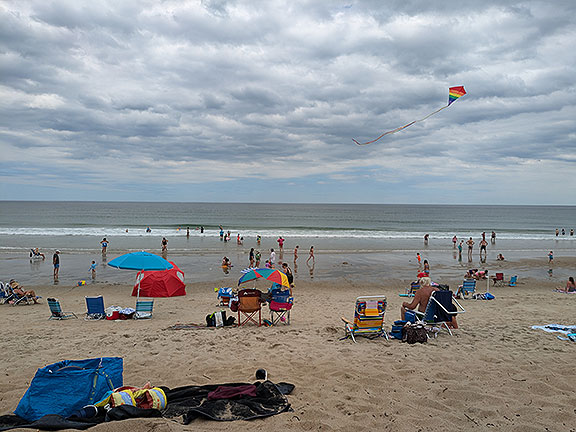 Salisbury Beach on a 90 degree day in July…  Discovering a baby bird in the barn… Meanwhile, I’ve been groping towards writing something for my blog. I haven’t felt uninspired exactly. More that I’m lacking focus. I’ve read another ten books that I think deserve discussion and analysis as I usually do here. But unlike some times when the connections between the books seem clear and what I have to say helps link them into a larger (hopefully cohering) essay, my thoughts have not been gelling this time.
I attended a gathering of neo-Luddites at the Blue Mountain Center in the first week of June. Perhaps I should clarify that Luddism doesn’t mean what most people take it to mean: an uncritical knee-jerk refusal or rejection of all technology or “progress.” That would be a meaningless position. As Brian Merchant makes clear in his excellent Blood in the Machine that I talked about in a previous post, the actual workers in early 1800s England who attacked various factories and machines were quite selective. They went after machines that they identified as worsening their lives and making their exploitation more extreme. They did not attack all machinery, and actually were adept at choosing technologies that improved their lives and made their work lives more pleasant, more endurable. It was primarily a class struggle against those who owned the new factories and were imposing new machinery to speed up and intensify the work process without taking into account the effects on those who would run the machines. Ultimately the original movement (under the name of a mythological General Ned Ludd) was brutally crushed by the British government using capital punishment for all sorts of relatively trivial property crimes. Since the 1810s, the term ‘Luddite’ has been thrown at any and every group or individual who suggests that the decisions about technologies, labor processes, economic organization, etc. are misguided and should be critically considered. The idea that we have taken wrong paths again and again in the interests of private profit can hardly be controversial at this stage in history. And yet, every challenge that arises from anyone who doesn’t own enough wealth to make unilateral decisions that affect us all is met with derision and the dismissive term “Luddite!” In its slightly watered down version, critics are accused of standing in the way of Progress. (Read my “The Progress Club: 1934 and Class Memory” for a clear look at how this worked in San Francisco’s 20th century history.)
I anticipated meeting super interesting people at the Blue Mountain Center meeting—which I did—but I did not imagine we would find enough commonality that we’d leave there with a shared mission. As it turns out, most of the attendees endorsed a two-part agenda to follow through on. Part one, that I participated in, focused on finding a way to document and record the history of the past half century of tech criticism and neo-Luddite actions. This might include an extensive internal bibliography (since so many of the folks in the larger community already have huge libraries and have produced so much interesting writing and other works of tech criticism), as well as an annotated selected bibliography to publish online that would be a convenient “one-stop shop” for those who are beginning the exploration of these themes. The future website should include histories of past conferences, past anthologies, past publications, as well as documenting the ongoing campaigns that are fundamental challenges to the direction of technological development in our current era—I frame it as a battle over the direction of the General Intellect. Whether we’re talking about the overarching challenge to the petro-chemical industries who are primarily responsible for the unfolding climate catastrophe, cancer epidemic, and much of the biodiversity collapse too, or the burgeoning efforts to challenge the rollout of AI in the context of a rapacious surveillance capitalism dominated by a few monopoly tech firms, or the global (and tech worker) rejection of Israel’s genocidal campaign in Gaza using state-of-the-art armaments paid for by U.S. taxpayers or produced by the only dynamic sector in Israel’s domestic economy, war tech. There are many more examples of movements “from below” contesting the design and uses of technologies, the purposes to which our shared technosphere is put. Biomedical research is another area that is presented as a benign series of technological breakthroughs, but simmering within and without are social actors who reject the resurgent eugenicist agendas bolstering much of this work, who recognize the absurd patriarchal and heteronormative assumptions that underly all of modern medicine. Peasant movements connecting with agroecologists are crossing the global north-south boundaries to contest the multinational grain and drug companies who dominate an unsustainable and ecocidal industrial agricultural system. And so on.
 My granddaughters’ great-great-grandfather was Al Capp, cartoonist of the L’il Abner strip that was extremely popular from the 1930s to the 1970s. Here in 1948 he introduced his metaphor for generalized abundance, the Shmoo! Continue reading War Is the Air We Breathe
|
Hidden San Francisco 2nd EDITION!

NEW 2nd EDITION NOW AVAILABLE!
Buy one here
(Pluto Press, Spring 2025)
|


















